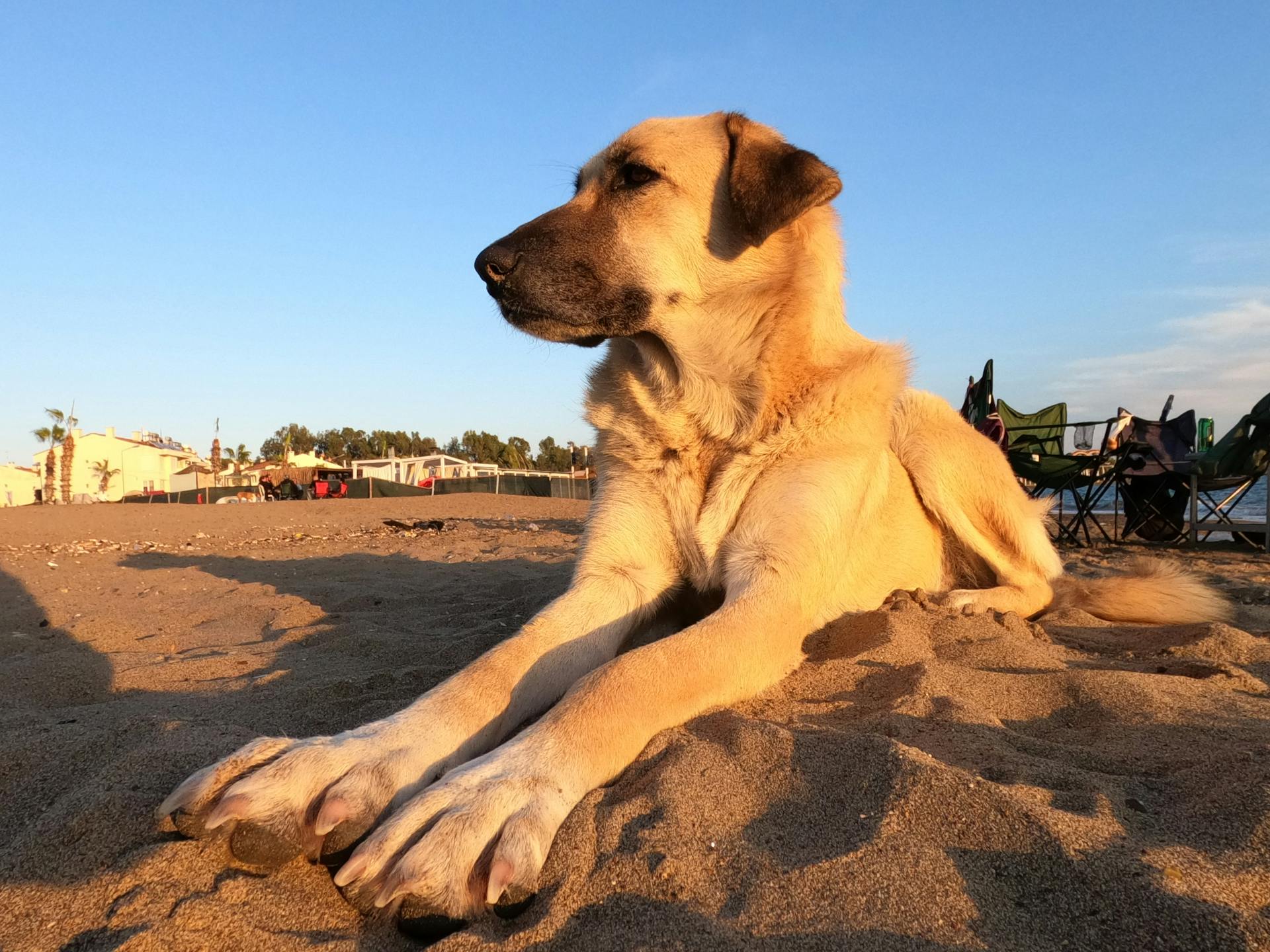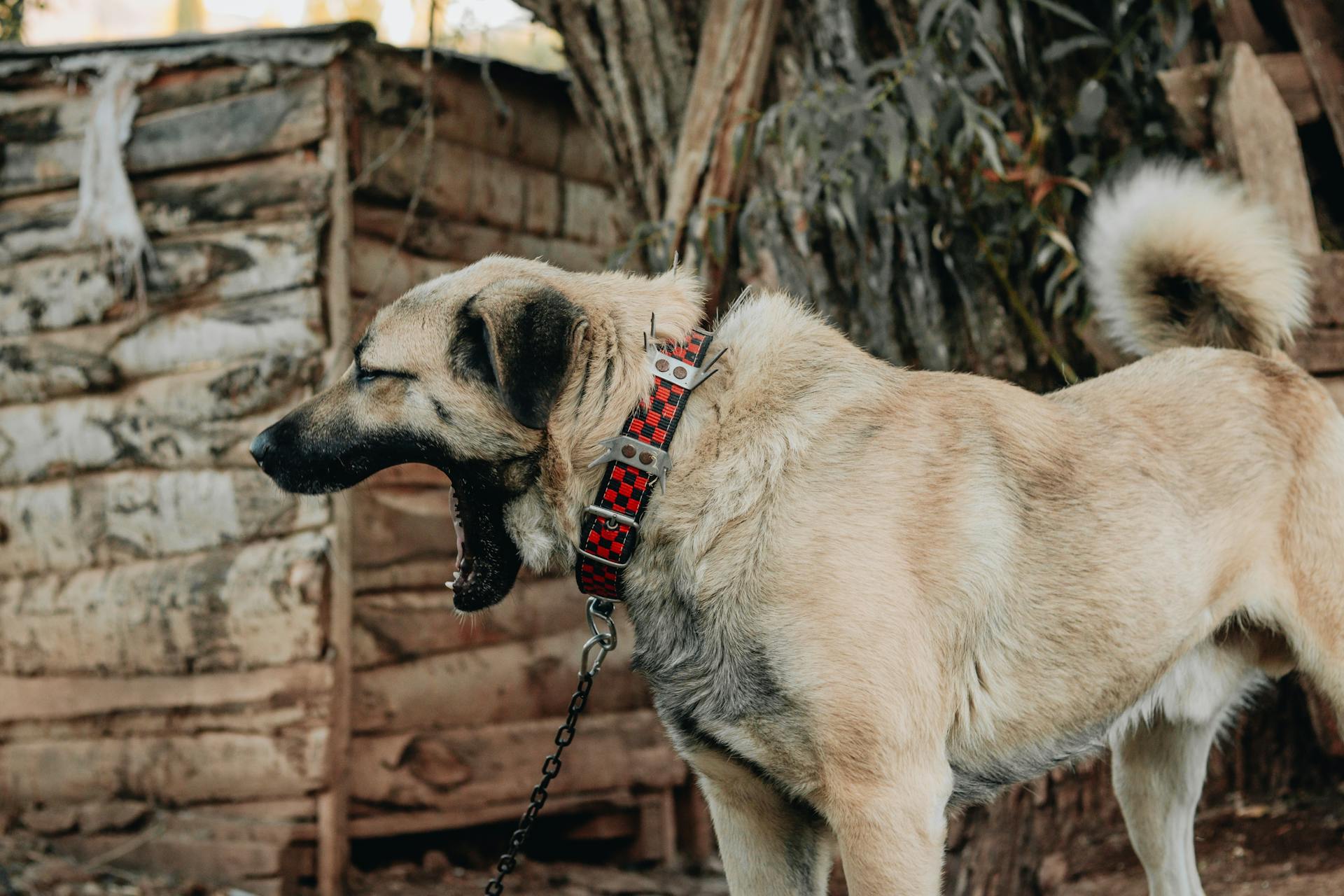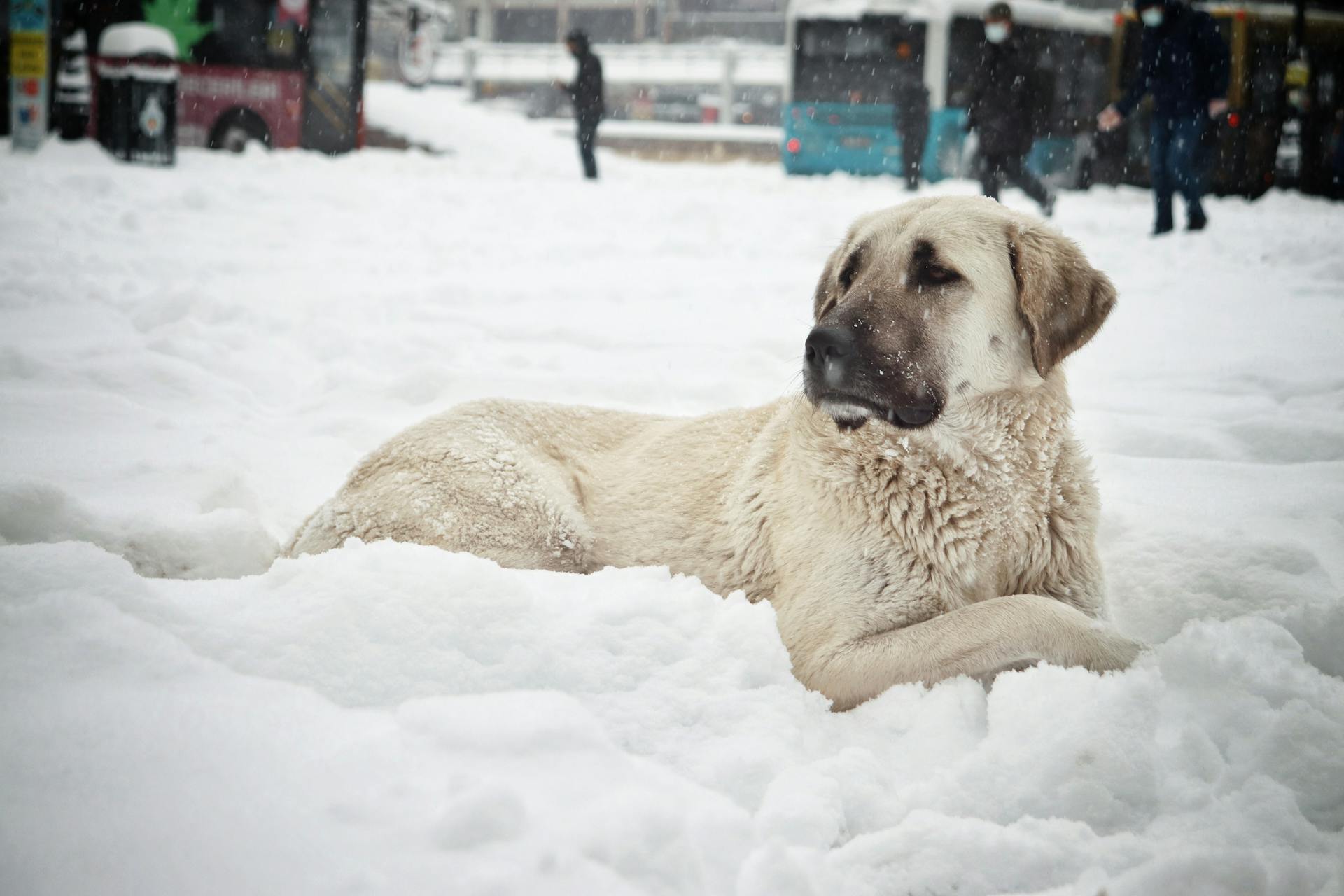
The Kangal Shepherd Dog is a loyal and protective breed, known for its strong instinct to defend its flock and family. They are naturally suspicious of strangers and will often take time to warm up to new people.
With proper socialization, however, Kangal Shepherds can become gentle and affectionate companions. They thrive on human interaction and enjoy being around their family.
Their independent nature means they can be stubborn at times, but consistent training and positive reinforcement can help overcome this.
History and Origins
The Kangal Shepherd Dog has a rich history that dates back to the 12th century in Sivas, Turkey. They originated in the Kangal District of the Sivas Province.
This breed was highly prized by the Turkish people and was even featured on Turkish post stamps and coins. They are considered to be the national dog of Turkey.
The Kangal Shepherd Dog was bred to be a guardian of livestock, specifically to ward off bears and other predators. They were used by local villagers to protect their goats and sheep.
A fresh viewpoint: Kangal Dog Price in Turkey
The breed was introduced to the United States in 1985 by Judith and David Nelson. To this day, there remains some disagreement about whether the Kangal Shepherd Dog and the Anatolian Shepherd Dog are the same or separate breeds.
The Kangal Shepherd Dog was bred to be highly intelligent, strong, and agile, making them well-suited for their role as guardians of livestock. They are known for their ability to think on their feet and respond to threats.
The breed was carefully and selectively bred to achieve certain characteristics, such as strength, size, and personality. This selective breeding helped to keep the breed 100% pure and uniform in structure.
The Kangal Shepherd Dog has been used by farmers in Namibia to protect livestock from cheetah attacks, with significant success in reducing livestock losses and cheetah killings.
Temperament and Behaviour
The Turkish Kangal Shepherd dog is a unique breed with a temperament that's both fascinating and challenging. They are naturally protective and have a strong instinct to guard their family, livestock, and territory.
Their independent nature means they can become stubborn if not properly trained and socialized from an early age. This is crucial for establishing a strong bond with their human family.
One of the key characteristics of the Kangal Shepherd is their calm and composed demeanor, which belies their intimidating size and strong protective instincts. They are known to be gentle and affectionate towards their family members.
However, they can be reserved or aloof with strangers, making them effective guardians that require proper training and socialization. Early socialization is particularly important to ensure they don't develop any aggression towards other pets or people.
Here are some key temperament traits to consider:
- Needs a firm pack leader
- Requires early socialisation
- Will protect their pack, family or livestock with their life
- Affectionate, loyal, calm and watchful towards their family
It's essential to understand that Kangal Shepherds have a strong protective instinct, which can sometimes be misinterpreted as aggression. They are not naturally aggressive, but they will defend their family and territory if they feel threatened.
To ensure a happy and healthy relationship with your Kangal Shepherd, it's crucial to provide them with a suitable environment, proper training, and plenty of exercise and mental stimulation.
Are Aggressive?
The Kangal Shepherd Dog is indeed an intimidating breed, but don't let their size fool you - they're also incredibly gentle and loving.
They have a strong guarding instinct, which makes them fearless and territorial. Their intelligence and strength make them one of the best guard dogs out there.
A well-raised and trained Kangal is fiercely loyal and devoted to their owner, and will obey all commands. They're naturally independent and can develop this trait from as early as 2 years old.
Their guarding abilities are innate, so they won't need training for it - but they will need training to control their natural urge to attack. The best way to train a Kangal is to supervise their natural instincts and reward positive behavior.
They have the strongest bite force in the dog world, with a whopping 743 psi - so it's essential to discourage negative behavior like biting and chewing in puppies. Early socialization is key to developing a well-behaved and well-rounded Kangal.
A Kangal will initially try to alert an intruder with a roar and bark, but if that doesn't work, they'll attack to protect their property, flock, and family.
Take a look at this: Dogs German Shepherd Attack
Care and Living Conditions
To keep your Kangal Shepherd Dog happy and healthy, it's essential to provide them with a suitable living environment. They need a large fenced backyard where they can run and play to exhaust their excessive energy.
A minimum of an hour of outdoor exercise every day is necessary, including training exercises and playtime with smart toys to keep them mentally stimulated. This breed loves to patrol around their property, so granting them access to safe outdoor space is key.
Their large size means they're not suited for apartment life, so if you're looking for a small space dog, a Kangal Shepherd Dog is not the best fit. However, they make great jogging and running partners for active dog owners.
To train a Kangal Shepherd Dog, you'll need to be patient and tactical, using positive reinforcement and short, fun training sessions with a dog whistle. They don't respond well to obedience training and can be very hard to train due to their independent nature.
Daily walks and regular nail care are also essential, with their nails staying in great condition naturally if they're given sufficient outdoor time. Brushing their teeth at least two or three times a week can help prevent tartar buildup and bacteria.
You might like: How to Train a German Shorthaired Pointer to Hunt
Breed Information
The Kangal Shepherd Dog is a Turkish breed with a rich history, originating from the Kangal district in Sivas Province. They have a unique double coat designed for insulation and protection, reflecting their adaptation to the rugged Turkish landscape.
Their distinctive appearance is matched by their calm and composed demeanor, despite their intimidating size. Kangal Shepherds are known for their gentleness and affection towards their family members.
In terms of their guarding instincts, Kangal Shepherds have been traditionally employed to protect livestock, showcasing exceptional vigilance against predators such as wolves and bears. With strong protective instincts, these dogs can be reserved or aloof with strangers, making them effective guardians that require proper training and socialization.
Breed Highlights
The Anatolian Shepherd and Kangal Dog breeds have some similarities, but they're not exactly the same thing.
Originating from Turkey, the Kangal Shepherd Dog has a rich history in Turkish shepherding traditions. It's renowned for its formidable guarding instincts, traditionally employed to protect livestock from predators.

Both breeds are known for their impressive physical presence, but the Kangal Shepherd has a unique double coat designed for insulation and protection. This coat is a key adaptation to the rugged Turkish landscape.
Despite their intimidating size, both breeds are known for their calm and composed demeanor, displaying gentleness and affection towards their family members.
Size
The Kangal Shepherd Dog is a large breed, with most standing 28 to 34 inches at the shoulder.
Male Kangal Shepherd Dogs tend to be slightly larger than females.
Female Kangal Shepherd Dogs can be slightly smaller than their male counterparts.
Some dogs can be smaller or larger than average for their breed.
Pictures
Pictures of the breed are essential for identifying its unique characteristics.
The breed's distinctive coat pattern, featuring a mix of black and white markings, is a key visual identifier.
A photo of a breed individual will often reveal its athletic build and lean physique.

The breed's large, erect ears are another notable feature that can be seen in pictures.
Their expressive brown eyes are a favorite among breed enthusiasts and can be seen in many breed photos.
Whether in motion or at rest, the breed's agile stance is a testament to its athletic ability.
The breed's short, smooth coat requires minimal grooming, making it a great choice for busy owners.
Frequently Asked Questions
Can a Kangal be a house dog?
Yes, Kangal dogs can thrive in a household setting with proper care and attention. However, they require regular exercise, mental stimulation, and obedience training to ensure a happy and healthy home life.
Is the Kangal the toughest dog in the world?
The Kangal holds the record for the strongest bite force in the world, with an impressive 734 psi. Its powerful jaws make it a formidable guardian of livestock, capable of neutralizing even the most threatening predators.
Are Kangal dogs good with kids?
Kangal dogs are generally gentle with children and the people they bond with, making them a great choice for families. However, their protective instincts require proper training and socialization to ensure a harmonious household.
What are the cons of a Kangal Dog?
Kangal Dogs are not suitable for inexperienced owners due to their size, strength, and territorial nature. They require regular exercise, attention, and a job to do, making them a high-maintenance breed.
Sources
- https://www.hoomansfriend.com/post/turkish-kangal-temperament-a-proud-guarding-angel-of-an-ancient-lineage
- https://www.omlet.us/breeds/dogs/turkish_kangal_dog/
- https://en.wikipedia.org/wiki/Kangal_Shepherd_Dog
- https://www.realesaletter.com/blog/dog-breeds/kangal-shepherd-dog
- https://dogtime.com/dog-breeds/kangal-shepherd-dog
Featured Images: pexels.com


